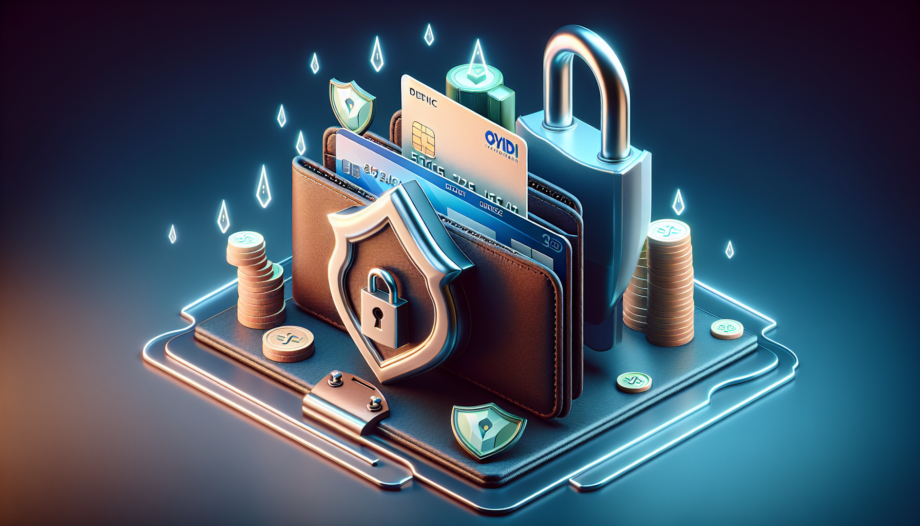In today’s digital age, our debit cards have become an essential tool for managing our finances. However, with the convenience of online shopping and contactless payments comes the increased risk of fraud and hacking. Debit card fraud is a growing concern, with scammers constantly finding new ways to steal sensitive information and drain our bank accounts. In this article, we will explore the common risks associated with debit card fraud and provide you with practical tips to protect your card from being compromised.
Understanding Debit Card Fraud Risks
Common Debit Card Fraud Scenarios
Debit card fraud can take many forms, from cardless fraud to e-skimming. Cardless fraud occurs when a scammer obtains your stolen card numbers and uses them to make fraudulent purchases without physically possessing your card. E-skimming, on the other hand, involves hackers compromising an e-commerce site and collecting account information from unsuspecting customers.
According to Insider Intelligence, the surge in online shopping during the pandemic has led to an increased risk of credit card fraud. The Payment Card Industry (PCI) Security Standards Council, which oversees cardholder data security requirements, has proposed stronger controls to counteract this fraud surge, with the new standards set to take effect from March 31, 2024.
Skimming and Shimming Threats
Skimming is another common method used by scammers to steal debit card information. Skimmers are devices installed on ATMs, payment terminals, and gas station fuel pumps to capture card data and steal cardholders’ PINs. The FBI estimates that skimming results in over $1 billion in losses each year.
Shimmers are a more advanced version of skimmers that fit inside the card reader and transmit card numbers via Bluetooth. These devices are even harder to detect than traditional skimmers, making them a growing threat to debit card security.
Top Tips to Protect Your Debit Card
Use Contactless Payments When Possible
One of the best ways to protect your debit card from skimmers is to use contactless credit cards or a mobile wallet whenever possible. These payment methods use encrypted technology that makes it much harder for scammers to steal your card information.
Consider using an RFID wallet, which shields your cards from radio frequency identification technology used by some skimmers. By keeping your cards in an RFID-blocking wallet, you can prevent scammers from remotely accessing your card information.
Favor Credit Cards Over Debit Cards
While debit cards offer convenience, they generally have less protection against fraud compared to credit cards. Most credit cards come with zero fraud liability, meaning you won’t be responsible for any unauthorized charges. Credit cards are also more likely to offer reward programs, making them a more attractive option for everyday purchases.
If you must use a debit card, be sure to monitor your account closely for any suspicious activity. Avoid using your debit card for online purchases or at unfamiliar merchants, as these transactions carry a higher risk of fraud.
Set Up Transaction Alerts and Monitor Statements
One of the easiest ways to catch debit card fraud early is to set up transaction alerts with your bank. These alerts will notify you via text or email whenever a purchase is made using your card, allowing you to quickly spot any unauthorized transactions.
In addition to alerts, be sure to regularly review your bank statements for any discrepancies. If you notice a charge that you don’t recognize, contact your bank immediately to dispute the transaction and report the fraud.
| Action | Benefit |
|---|---|
| Set up transaction alerts | Receive notifications for purchases, spot unauthorized transactions quickly |
| Review bank statements regularly | Identify discrepancies and fraudulent charges early |
| Dispute unrecognized transactions | Protect your finances, recoup stolen funds |
Be Wary of Phishing Scams
Phishing scams are another common tactic used by fraudsters to obtain your debit card details. These scams typically involve emails or texts that appear to be from your bank or a legitimate company, asking you to provide sensitive financial information.
To protect yourself from phishing scams, never click on links or provide personal information in response to unsolicited emails or texts. If you receive a suspicious message claiming to be from your bank, contact them directly using a trusted phone number or website to verify the request.
Avoid Using Debit Cards on Public Wi-Fi
Public Wi-Fi networks are a prime target for hackers looking to steal sensitive information like debit card numbers and PINs. When you use your debit card on an unsecured public network, scammers can use keylogging software to capture your data as you type it in.
To stay safe, avoid using your debit card for online shopping or banking while connected to public Wi-Fi. If you must make a transaction, use your mobile phone’s cellular data instead, as it is much more secure. Always make sure your mobile device has strong passwords, two-factor authentication, and updated security software, operating system, and internet browser.
What to Do If Your Debit Card Is Compromised
Contact Your Bank Immediately
If you suspect that your debit card has been compromised, the first step is to contact your bank immediately. Report the lost or stolen card and ask them to suspend the compromised card to prevent any further unauthorized transactions. Your bank will then issue you a new card with a different account number.
Be sure to review your recent transactions with your bank to identify any fraudulent charges. If you spot any unauthorized purchases, request that your bank dispute the charges on your behalf.
Check Your Credit Report for Fraud
In addition to contacting your bank, it’s a good idea to check your credit report for any signs of fraud. Scammers who obtain your debit card information may also attempt to open new accounts in your name, which can severely damage your credit score.
You can request a free credit report from each of the three major credit bureaus (Equifax, Experian, and TransUnion) once per year. Review your report carefully for any accounts or inquiries that you don’t recognize, and consider placing a fraud alert on your credit file to prevent further identity theft.
Report Fraud to Relevant Authorities
Finally, be sure to report any debit card fraud to the relevant authorities, such as your local law enforcement and the Federal Trade Commission (FTC). By reporting the crime, you can help prevent others from falling victim to similar scams and assist in the investigation and prosecution of the perpetrators.
You can report identity theft and fraud to the FTC online at IdentityTheft.gov or by calling 1-877-ID-THEFT (1-877-438-4338). The FTC will then provide you with a personalized recovery plan and guide you through the process of resolving the fraud and restoring your identity.
In conclusion, protecting your debit card from hacking and fraud requires a combination of vigilance, smart practices, and quick action in the event of a compromise. By understanding the common risks, implementing security measures, and knowing what to do if your card is stolen, you can safeguard your hard-earned money and maintain your financial well-being in the digital age.
See also:

